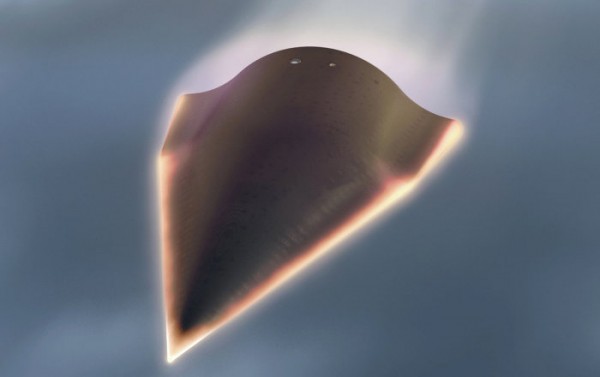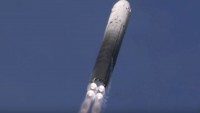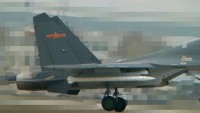Russia’s Hypersonic Missile Development Program in Trouble
| Arthur Dominic Villasanta | | Jan 20, 2017 07:48 AM EST |
(Photo : TASS) Russia's Yu-74 ultra-maneuverable Hypersonic Glide Vehicle .
Russia is frantically searching for new materials to protect the hypersonic missiles it's developing from being destroyed by the superheated plasma cocoon created by their flight.
Russia has made hypersonic weapons a defense priority, especially with the opening of NATO's first defensive missile shield in Romania. When completed, NATO's missile defense system will extend from Greenland in the far north of Europe to the Azores Islands in the south. Another missile defense system will become operational in Poland by 2018.
Like Us on Facebook
In response, Moscow in July 2016 revealed plans to reactivate one of its old Dnepr missile bases near the Black Sea. The base will be equipped to intercept ballistic, cruise and hypersonic missiles out to a range of 3,200 kilometers.
Russian Deputy Defense Minister Yuri Borisov said Russia is searching for new materials to develop its hypersonic weapons.
"Coming next are hypersonic weapons, which require the use of principally new materials and control systems that operate in a completely different medium, in plasma," said Borisov.
Borisov's remarks seem to indicate Russia's hypersonic weapons development program has run into trouble after announcing in August 2016 that its Yu-74, a hypersonic glider is ready for war.
The new ICBM intended to carry it won't be ready until 2020 at the earliest, however.
Russian media says this ultra-maneuverable Hypersonic Glide Vehicle (HGV) can bridge the 2,500 kilometer air distance from Moscow to London in 13 minutes and can penetrate NATO's missile defense system. The Yu-74, which can be carry a thermonuclear warhead, is also capable of penetrating the U.S. THAAD missile defense system.
Its ability to pierce western defenses is due mostly to its speed. The Yu-74 tears through the air at Mach 10 (12,400 km/h).
Once released into orbit, the Yu-74 zooms back to Earth towards its target and assisted by gravity attains hypersonic speed. A Yu-74 glider can be equipped with a nuclear warhead, electronic warfare systems or false target simulators.
This hypersonic nuclear warhead will serve as the payload of Russia's new RS-28 Sarmat (or Sarmatian) SS-X-30 intercontinental ballistic missile. Russian sources claim this ICBM can carry up to 24 Yu-74s but western sources say a Sarmat's payload can consist of 10 heavy warheads or 15 lighter ones, or a combination of warheads.
TagsRussia, hypersonic missile, Deputy Defense Minister Yuri Borisov, Yu-74, THAAD, RS-28 Sarmat
©2015 Chinatopix All rights reserved. Do not reproduce without permission
EDITOR'S PICKS
-

Did the Trump administration just announce plans for a trade war with ‘hostile’ China and Russia?
-

US Senate passes Taiwan travel bill slammed by China
-

As Yan Sihong’s family grieves, here are other Chinese students who went missing abroad. Some have never been found
-

Beijing blasts Western critics who ‘smear China’ with the term sharp power
-

China Envoy Seeks to Defuse Tensions With U.S. as a Trade War Brews
-

Singapore's Deputy PM Provides Bitcoin Vote of Confidence Amid China's Blanket Bans
-

China warns investors over risks in overseas virtual currency trading
-

Chinese government most trustworthy: survey
-

Kashima Antlers On Course For Back-To-Back Titles
MOST POPULAR
LATEST NEWS
Zhou Yongkang: China's Former Security Chief Sentenced to Life in Prison

China's former Chief of the Ministry of Public Security, Zhou Yongkang, has been given a life sentence after he was found guilty of abusing his office, bribery and deliberately ... Full Article
TRENDING STORY

China Pork Prices Expected to Stabilize As The Supplies Recover

Elephone P9000 Smartphone is now on Sale on Amazon India

There's a Big Chance Cliffhangers Won't Still Be Resolved When Grey's Anatomy Season 13 Returns

Supreme Court Ruled on Samsung vs Apple Dispute for Patent Infringement

Microsoft Surface Pro 5 Rumors and Release Date: What is the Latest?














